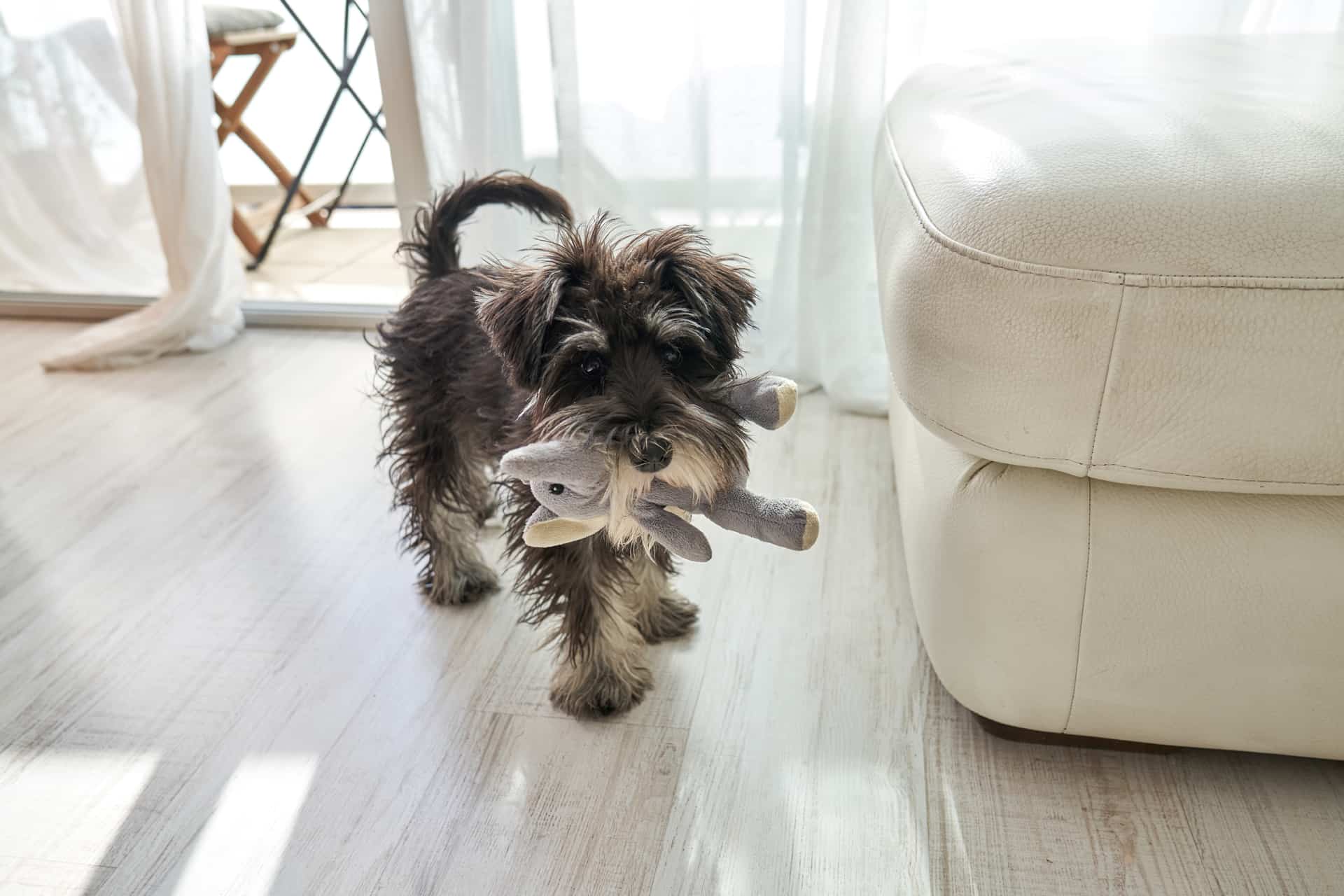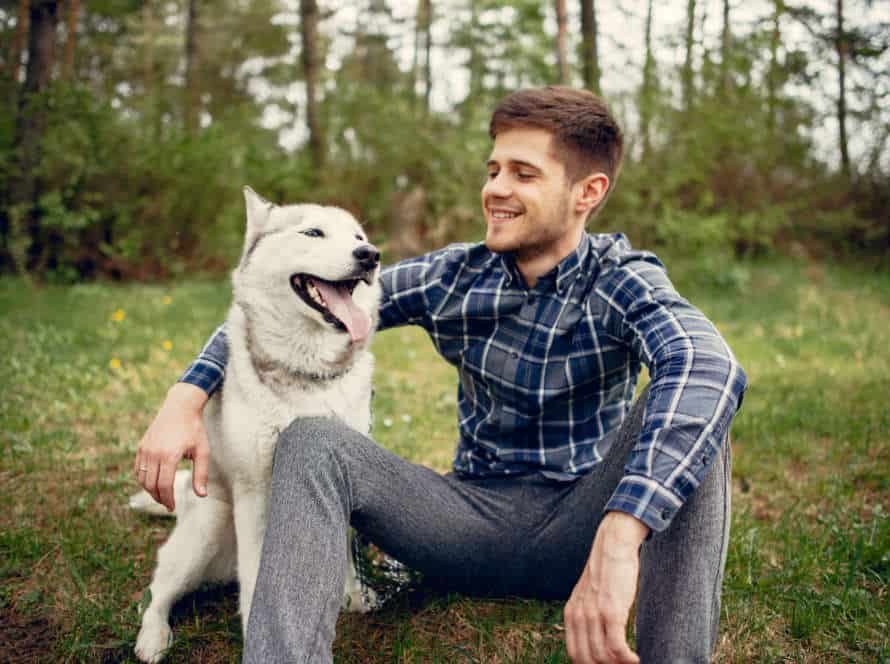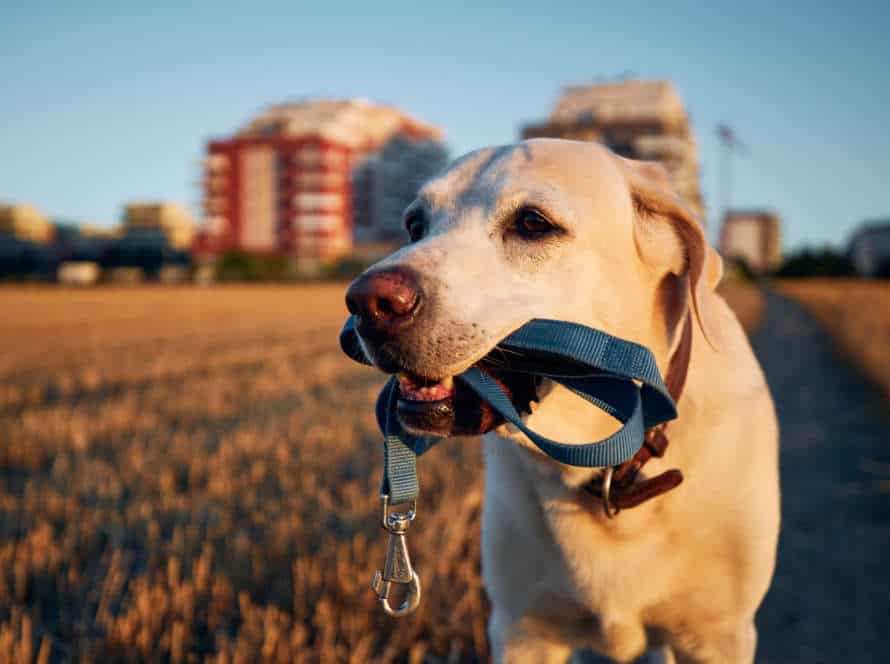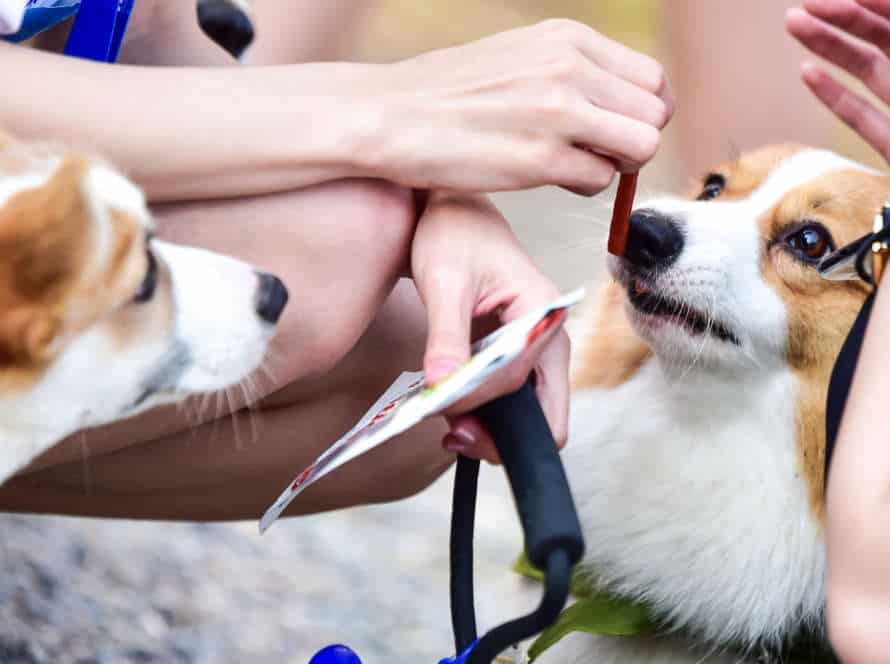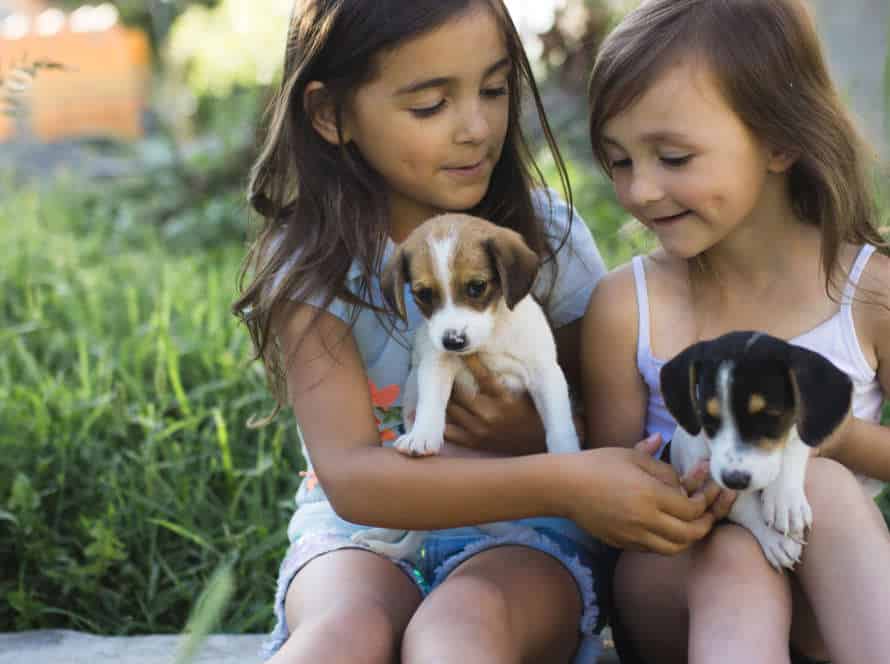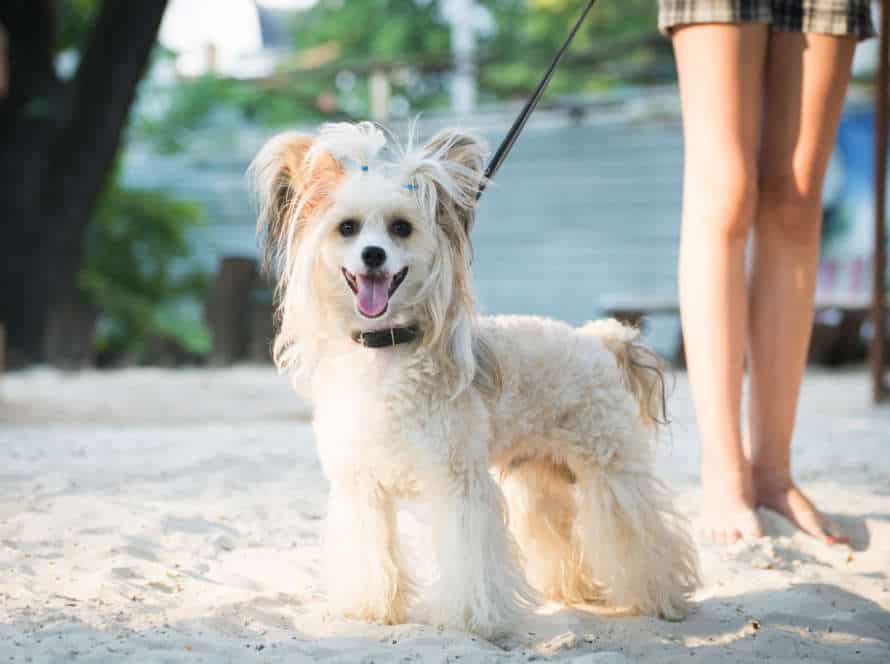Counterconditioning Techniques for Resource Guarding
Resource guarding is a common problem. Counterconditioning can manage it. Pair a positive stimulus, like food or attention, with the guarded item. This changes its meaning for the dog. In this article, we’ll discuss counterconditioning techniques. Plus, how to use them correctly.
Understanding Resource Guarding Behavior in Dogs
Resource Guarding in dogs is a common issue for pet owners who misunderstand their pets’ actions. It’s a natural tendency for dogs to protect their stuff, like food, toys, space, and human possessions. Counterconditioning techniques can help. Here are some ideas:
- Desensitization: Slowly introduce the dog to the thing that makes them guard, while rewarding them with treats. This teaches them the thing isn’t a threat.
- Counter-conditioning: Connect the trigger with positive stuff, like treats and toys. This can help the dog get over guarding.
- Avoid Conflict: Steer clear of situations that make the dog guard.
- Get Professional Help: Talk to a behaviorist to understand why the dog guards, and get a plan that’s right for them.
Treating resource guarding takes time and patience. Be sure to think about your pet and yourself.
Positive Reinforcement Counterconditioning Approach
Positive reinforcement counterconditioning is a training technique to change undesirable behaviors in dogs, such as resource guarding. How does it work?
- Firstly, teach your dog basic commands like “sit,” “stay,” and “leave it.”
- Identify guarded items and create positive experiences with them; for example, give a treat when you come near them while they eat or play.
- Gradually increase interaction with guarded items, while still providing positive reinforcement. For instance, hand feed them or toss treats their way.
- Use obedience commands to reinforce good behavior and divert bad behavior – like “leave it” when they approach a guarded item and reward them.
With patience and effort, positive reinforcement counterconditioning can help modify resource guarding in dogs.
.1 Steps for Implementing the Positive Reinforcement Counterconditioning Approach
Positive reinforcement counterconditioning is a great way to fix a dog’s resource guarding habits. Here’s what to do:
- Figure out what your pup is guarding (e.g. food bowl, toy, bed).
- Near the resource, give your doggy high-value treats.
- Gradually come closer and keep giving treats. Stop if your pup shows signs of discomfort or aggression.
- Keep going, building up speed and frequency of movements until you can touch or pick up the resource without a bad reaction.
- Reinforce good behavior with treats or praise. Don’t punish or scold your pet.
- Be consistent and patient. Ask a pro for help if it’s not improving.
Tip: You should always do this with help from an experienced dog trainer or behaviorist.
.1.1 Identifying the Guarding Trigger and Establishing a Threshold Distance
- Identify the trigger for guarding and set a threshold distance. This is the first step in counterconditioning techniques for resource guarding in dogs.
- Identify the item or resource that your dog guards. E.g. food, toys, or space.
- Approach it in a way that sets off their guarding behavior. E.g. reaching for their food bowl.
- Observe their body language, e.g. growling or snarling. Note the distance at which it occurs. That’s the threshold distance.
- Go beyond this distance. Slowly approach the resource. Reward your dog’s calm behavior.
- Keep doing this. Decrease the distance slowly. Teach your dog to link the resource with positive experiences.
- Counterconditioning techniques can help your dog live better.
The above steps explain the counterconditioning techniques for resource guarding in dogs. These steps include identifying the trigger for guarding and setting a threshold distance, approaching the resource in a way that sets off their guarding behavior, observing their body language, going beyond the threshold distance, rewarding calm behavior, decreasing the distance slowly, and teaching your dog to link the resource with positive experiences.
.1.2 Creating an Association between the Trigger and Treats/Toys
Counterconditioning is a good way to treat resource guarding in dogs. A counterconditioning technique is to link the trigger with treats/toys. This technique changes the dog’s emotion to the trigger. And, it replaces the bad association with a good one.
To do this:
- Find the trigger that causes the dog to guard resources.
- Introduce the trigger at a low level and pair it with a great treat or toy.
- Do this process a few times and slowly increase the intensity of the trigger.
- Over time, the dog will link the trigger with a nice experience and won’t act aggressively towards it.
- Be patient and keep doing it to get good results.
.1.3 Slowly Decreasing the Distance
Counterconditioning for resource guarding is about changing a dog’s emotion towards an object. It involves decreasing the distance between the pup and the object. Follow these steps:
- Step 1: Get your pooch to think highly of giving up the object. Start by rewarding them with treats for the object. Increase the amount of time they must hold the object before getting the treat.
- Step 2: Make the object more valuable. Use better treats or an even more desired object.
- Step 3: Keep decreasing the distance. Reward them each step closer to the object.
- Step 4: Repeat the process. Slowly decrease the distance, until the dog can approach and surrender the object without issue.
It’s important not to punish a pup for resource guarding as it may make the behavior worse. Use positive reinforcement and if needed, ask a professional dog trainer for help.
.1.4 Gradually Changing the Trigger
Resource guarding in dogs can be addressed with counterconditioning techniques. Change the dog’s emotional response to the trigger by creating positive associations.
One technique is ‘gradually changing the trigger’. Start with a low-value item. As the dog gets used to it, introduce a more valuable item. Offer a treat at the same time.
The goal is for the dog to associate the guarded item with positive experiences. This will decrease their guarding behavior.
Be patient and consistent. If needed, consult a professional dog trainer for guidance.
.2 Dos and Don’ts of Positive Reinforcement Counterconditioning
Dos:
- Start small.
- Give high-value rewards.
- Keep training sessions short.
- Be consistent.
- Ask a professional for help.
Don’ts:
- Don’t make them confront their fear.
- Don’t punish.
- Don’t use negative reinforcement.
- Don’t expect immediate results.
- Don’t give up.
Pro Tip:
This technique works by teaching dogs to link previously negative situations with positive experiences, leading to a permanent change. With regular patience and consistency, this can help modify their aggression.
Desensitization Counterconditioning Approach
Desensitization counterconditioning is a technique used to reduce resource guarding behavior in dogs.
It involves connecting the presence of a person or animal to something positive. Start with a low-value item – toy or treat. Ask your dog to “leave it” or “drop it”. Reward them with a high-value treat or praise when they do.
Repeat this and increase the value of the resource and the duration of the command each time. Your dog will eventually link the command with something positive.
Note: this should only be done with a pro dog trainer or behaviorist.
Pro tip: resource guarding can be caused by fear or anxiety, so more training or behavior modification may be required.
.1 Steps for Desensitization Counterconditioning Approach
Desensitization counterconditioning is a great way to address resource guarding in pets. Here’s how you can execute it:
- Step 1: Figure out what your pet is guarding.
- Step 2: Start with a ‘low-value’ item and progress to more precious ones.
- Step 3: Get your pet closer to the item, with treats or toys as rewards.
- Step 4: Reward them for approaching without aggression.
- Step 5: Keep decreasing the distance while rewarding friendly behavior.
- Step 6: Repeat until they are comfortable.
Pro Tip: Don’t attempt this on your own if your pet is being overly aggressive. Look for a pro animal behaviorist.
.1.1 Identifying the Guarding Trigger and Establishing a Threshold Distance
Identifying a guarding trigger and setting a threshold distance is the first step in counterconditioning techniques for resource guarding in dogs. Here’s what to do:
- Find out the trigger that makes your dog guard his stuff – this could be food, toys or anything else.
- Set up a safe distance between your pup and their things. This is the threshold. It has to be far enough that your pup isn’t showing any signs of guarding.
- Slowly move the resource closer and watch your dog’s behavior. Stop when you notice any guarding signs e.g. growling or tensing.
- That is the threshold distance. Anything closer and your pup will likely act defensively.
- Use this distance for counterconditioning exercises to help teach your pup to associate positive things with you getting close to their resources.
.1.2 Identifying the Treats/Toys that the Dog Prefers
It’s important to know your dog’s likes and dislikes for successful counterconditioning of resource guarding.
Here are some steps that can help:
- Find out what treats and toys your pup prefers.
- See how they respond and watch how they guard the items.
- Reward calm and relaxed behavior with high-value treats like meat or cheese.
- Introduce rewarding interactions with previously guarded items.
- Your dog will learn that someone coming close to their stuff means treats, not danger.
Always get help from a professional dog behaviorist before starting these techniques.
.1.3 Gradually Decreasing the Distance
Decrease the space between your pooch and their guarded item! This is a counterconditioning method that can help with resource guarding. Here are the steps:
- First, determine the distance where your dog starts to show signs of guarding.
- Then, move closer to the thing while rewarding their calm behavior with treats and praise.
- Do this from a distance beyond the threshold.
- After they are comfy, decrease the distance further and keep rewarding them.
- Do this until your pup is at ease with you near the resource.
- Go at a pace comfortable for your dog. Never push them into a situation that causes distress.
.1.4 Replacing the Original Object of Guarding
Resource guarding is a problem that can come up in dogs and other pets. To replace the negative behavior, counterconditioning can be used.
A good way is to replace the guarded object with something the pet likes more. Follow these steps:
- Identify what the pet guards.
- Pick a treat or toy the pet loves.
- Put the treat or toy near the guarded thing when your pet isn’t around.
- When the pet comes close, take away the guarded thing and replace it with the treat or toy.
- Keep doing this until your pet knows the treat or toy is a good thing.
- Step-by-step, reduce the treat or toy, but still reward your pet for not guarding.
Pro Tip: Keep it up! You have to repeat the steps each time the pet guards, to see results.
.2 Dos and Don’ts of Desensitization Counterconditioning
Desensitization and Counterconditioning are good ways to manage resource guarding. Here are some tips:
Do:
- Start low and increase intensity as your dog gets more comfortable.
- Use yummy treats for positive reinforcement.
- Take regular breaks – don’t overwhelm your dog.
- Get professional help if your dog is aggressive or doesn’t respond.
Don’t:
- Punish or scold your dog.
- Force them near the guarded resource.
- Go too fast or slow with the process.
- Ignore signs of distress from your dog.
These dos and don’ts make the training process better for you and your dog.
Preventing Resource Guarding Behavior in Dogs
Resource guarding is a behavior shown by dogs. They attempt to keep their valuable resources, like food, toys, and even spaces, from other animals and people.
To modify or reduce this behavior, counterconditioning can be used. This technique is done through desensitization and classical conditioning.
Let’s explore how to apply these techniques to resource guarding in dogs.
Early Socialization and Positive Reinforcement Training
Resource guarding in dogs is a serious issue, but it can be prevented. Early socialization and positive reinforcement training with counterconditioning techniques are the way to go!
Early socialization involves exposing your puppy to different people, environments, and stimuli. This helps your pup build positive associations and counter fear and anxiety. Positive reinforcement uses rewards like treats, praise and toys to encourage good behavior and obedience.
Counterconditioning techniques help your dog associate positive experiences with negative situations that caused resource guarding. This process involves introducing your dog to trigger items, like food or toys, while offering positive reinforcement. Increase exposure over time to show your pup these situations are not a threat and good things happen in them.
If resource guarding is severe or persistent, seek help from an animal behaviorist.
Management Techniques for Resource Guarding
Resource guarding is a natural behavior in dogs. But, it can be a problem. Management and counterconditioning techniques can help prevent it, and keep both you and your pup safe.
Management techniques:
- Feed your pup in a hidden area away from other pets.
- Don’t give your pup high-value resources around other doggos or people.
- Leash or baby-gate your pup to keep them from others, if needed.
- Keep your pup away from items they may try to guard, like trash cans and laundry baskets.
Counterconditioning techniques:
- When your pup eats high-value food, drop a small treat in the bowl.
- Teach your pup to “give” or “trade” an item for a treat or toy.
- Gradually expose your pup to situations where they may guard a resource and reward them when they’re calm.
By using these techniques, you can manage and prevent resource guarding behavior in your pup.
Avoiding Punishment-based Approaches
Punishment-based approaches are not good for treating resource guarding in dogs. Instead, use counterconditioning. This means changing a dog’s emotional response to something like food or toys, so it doesn’t feel the need to guard.
Do this by offering a low-value treat or toy. When the dog approaches, give a higher-value treat and take away the original item. Do this several times and gradually increase the value of the item, until the dog is willing to give it up without guarding it.
Other techniques include desensitization and positive reinforcement. Punishment-based approaches make a dog anxious and cause more resource guarding.
Frequently Asked Questions
Q: What is counterconditioning?
A: Counterconditioning is a behavioral training technique that uses positive associations to change an animal’s emotional response to a specific trigger or situation.
Q: What is resource guarding?
A: Resource guarding is when an animal becomes aggressive or defensive when another animal or human approaches something they consider valuable, such as food, toys, or territory.
Q: How can counterconditioning help with resource guarding?
A: Counterconditioning can help change an animal’s negative emotional response to someone approaching their resources by creating positive associations with that person’s presence and the possibility of receiving even better resources.
Q: Is counterconditioning effective for all types of resource guarding?
A: Counterconditioning techniques can be effective for mild to moderate resource guarding behavior. However, for severe cases, it is best to seek professional help from a certified animal behaviorist.
Q: Can counterconditioning make resource guarding worse?
A: Improperly administered counterconditioning can potentially make resource guarding behavior worse. It is essential to work with an experienced and qualified trainer or behaviorist who can tailor the program to the animal’s specific needs.
Q: How long does counterconditioning take to work?
A: The duration of counterconditioning depends on the animal’s temperament, the severity of the resource guarding behavior, and the consistency of training. It can take several weeks to months to see significant improvements.

